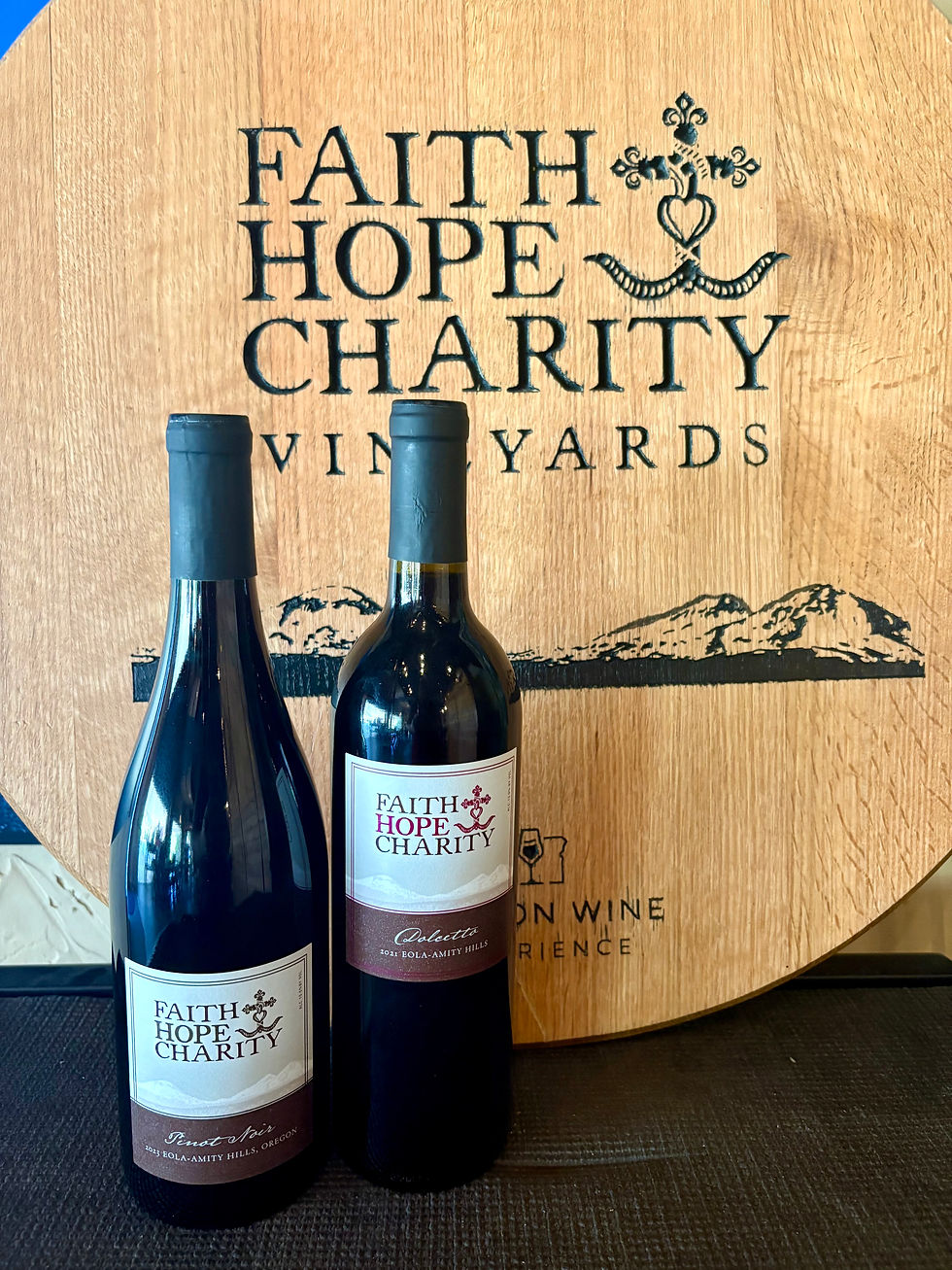Same Grape, Two Styles: How Winemaking Turns Dolcetto & Pinot Noir into Red or Rosé
- FHC
- Aug 14
- 2 min read
One of the great joys of winemaking is that a single grape variety can produce two completely different wines — each with its own color, texture, and personality. Dolcetto and Pinot Noir are perfect examples. They can be crafted into deep, complex reds or fresh, vibrant rosés. The difference isn’t the vineyard. It’s the winemaking process.
From Vineyard to Winery
Both styles start the same way: grapes are harvested, sorted, and gently crushed to release their juice. But from here, the paths diverge — and it all comes down to how long the juice spends with the grape skins.
Making Red Wine
In red winemaking, the juice is fermented with the skins, seeds, and sometimes stems for days or even weeks. This period of extended skin contact is what gives red wine its:
Deep Color – Pigments in the skins infuse the juice.
Tannin Structure – Tannins add texture, body, and aging potential.
Complex Flavors – Warm fermentation temperatures (often 75–85°F / 24–29°C) help extract flavor compounds, resulting in richer, layered wines.
Dolcetto (Red) emerges soft and fruit-forward with notes of black cherry, plum, and violets, while Pinot Noir (Red) tends to be lighter-bodied and silky, with flavors of red cherry, cranberry, and earthy undertones.

Making Rosé
Rosé winemaking is all about restraint. The juice is allowed only a brief encounter with the skins — sometimes just 2–12 hours. Once the desired color and light tannin level are reached, the juice is separated from the solids and fermented cool (around 55–60°F / 13–16°C). This cooler fermentation:
Preserves fresh, bright fruit flavors.
Enhances aromatic intensity.
Keeps the wine crisp and refreshing.
Dolcetto Rosé shows vibrant strawberry, raspberry, and melon, while Pinot Noir Rosé leans toward wild strawberry, watermelon, and floral notes.

Why the Difference Matters
The red winemaking process emphasizes depth, texture, and structure, producing wines that pair beautifully with hearty dishes and can often improve with age. Rosé winemaking focuses on freshness, fruitiness, and immediate appeal, making these wines perfect for light meals, picnics, and warm afternoons.
Final Sip
Same grape, same vineyard — but the decision on how long the juice spends with the skins sets these wines on two very different journeys. Whether you’re in the mood for the cozy complexity of a Dolcetto or Pinot Noir red, or the breezy charm of their rosé counterparts, you’re really tasting the artistry of time and technique in the cellar.





That’s a lovely way to capture the melon playground artistry of winemaking. You’ve touched on one of its most fascinating aspects: how technique transforms character.
Escape Road keeps players hooked with its escalating difficulty, powerful boosts, and heart-pounding moments of near misses and saves.
In Slither io, I once boosted toward a chase pellet only for another snake to boost at the same time, turning it into a race. I won by a pixel and they crashed when trying to slow down.
nice
nice